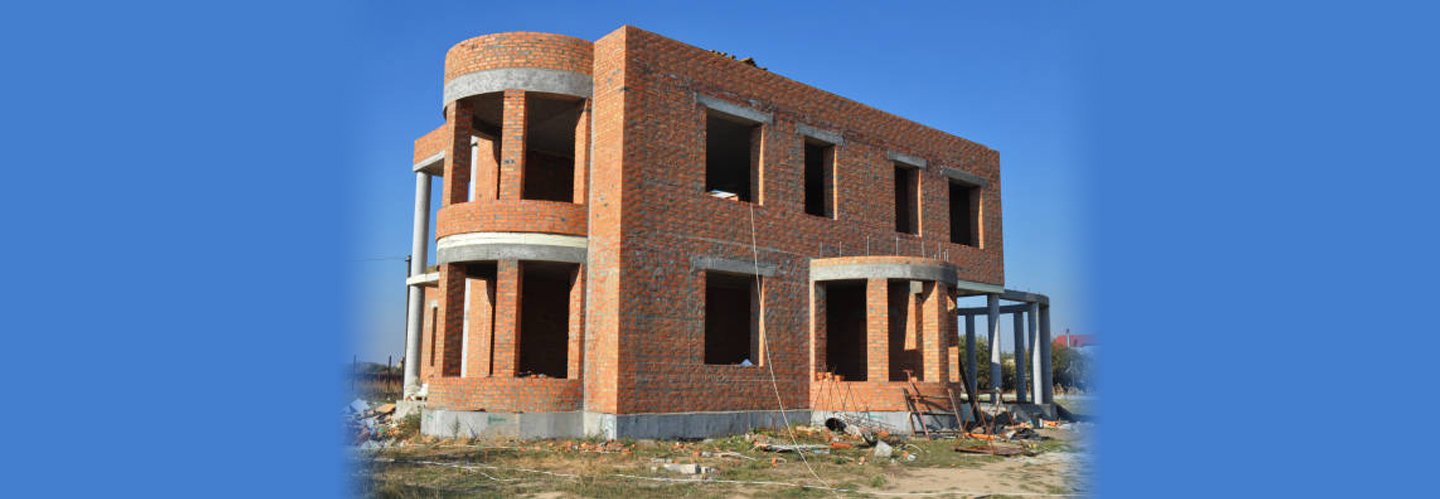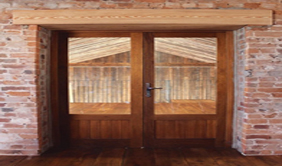
Lintel
A lintel is a structural horizontal block that spans the space or opening of doors, windows, verandas etc. between two vertical supports. It can be a decorative architectural element, or a combined ornamented structural item. It is often found over portals, doors and windows.
The primary function of the lintel is to provide supports to the openings in building and take loads originating from the high wall and transfer its heap to the side walls. The width of the lintel must be equal to the width of the wall above which the lintel is constructed. They are built on the top of openings, and their ends are built in the wall.
Arches are also constructed on the place of the lintel. However, as compared to arches, lintel beams are very easy to construct. Lintel beams are rectangular in plan and section and are constructed with different materials. Lintels are easy to build as it requires less formwork and easy centering when constructed in-situ i.e. above the wall. In any building construction, they can bear a high amount of load if the load is coming uniformly.
Over the years, the material and the method used for constructing lintel has undergone a considerable change, from wooden or stone lintel to brick and concrete lintel. In North Paravur Taluk, mainly in kutcha houses, the lintels were constructed with wooden planks that are placed on top of the openings. It is also observed that many of the kutcha houses, the lintel were absent on top of the openings. The usage of wooden planks or stone for constructing lintel were then replaced with provision of 2 layers of bricks and filling the center with plain cement concrete. In the present scenario, the trend followed for lintel construction in North Paravur is RCC lintel which increases the structural stability of the house when compared with other construction materials.
Based on the method of construction, two types of lintel are being adopted in the area.
- Lintel constructed continuously all around the wall: Lintels help in tying the building laterally and if continuously placed around all the walls provide a horizontal rigidity to the building, which is a compulsory measure in earthquake-prone zones. In a disaster resilient house construction, lintels should be provided continuously all around the wall.
- Lintel constructed on top of the openings of doors and windows: This method is usually adopted to minimize the design to save money and materials and results in cost efficiency. It is possible to reduce the lintels as per context and upon structural engineer’s advice.
Materials that can be used to construct a lintel
-
Reinforced Cement Concrete
In modern times, reinforced concrete lintels are extensively used. RCC has replaced all other construction materials as it overcomes the low tensile problem in concrete. They are very strong and can be employed in very big sizes and higher spans. Other advantages include its strength, fire resistance, rigidity, and ease of construction. They are also economical and durable as compared to other types of lintels. Precast and cast in-situ are the two methods of constructing RCC lintel.
- Cast in-situ RCC lintel: For larger spans, the lintels should be cast in-situ. For cast-in-situ RCC lintels, erection of centering, placing of reinforcement, and concreting is done as usual. The ends of the bars are hooked to increase the grip or bond between them and the concrete.
- Precast RCC Lintel: Pre-cast RCC lintels are preferred for small spans up to 2 meters. They are cast in wooden mould and cured well in advance. The use of pre-cast RCC lintels are economical and assures speedy construction as it doesn’t need extra time for curing or removing of props. However, while laying a pre-cast lintel, special care should be exercised to see that the marked face is on the top or upper side. This is essential because if the faces are reversed in position or the reinforcement is reversed, there will be a structural failure, endangering the structure.
-
Plain Cement Concrete
This type of lintels is prepared with plain concrete as steel bars are not used in it. Hence, they are not usable for heavy loads. They are made for a span of up to one meter. Concrete is very strong in compression but is weak in tension, that’s the reason they are not used in a longer span.
-
Reinforced brick work
In North Paravur, the material used other than RCC is reinforced brick work. When brick lintels are required to be used over large spans, they are reinforced with steel bars. The bricks are so arranged in parallel rows (either on edge or flat) that a 2 cm to 4 cm wide space is left lengthwise for inserting the reinforcement i.e., steel bars or rods. These spaces with reinforcement are then filled or embedded with rich cement mortar in 1:3 or cement concrete.
The depth of the reinforced brick lintels is equal to 10 cm or multiple of 10 cm (or one brick thickness). 6 mm bars are used as vertical stirrups at every 3rd vertical joint. 8 to 10 mm bars placed at the bottom are used as primary reinforcement But they are not recommended in an area with high intensities of rain or humidity. This is because the bars may corrode over a period of time, thus weakening the lintel.
Why wood and stone are rarely used nowadays?

Why wood and stone are rarely used nowadays?
Wooden lintels are the oldest type of lintels but are not used today. The wooden lintels are rarely used on account of their high cost, susceptibility to catching fire, and susceptible to decay because of rot or termites.
Stone, being of poor tensile strength, cannot withstand the transverse stresses. Hence stone lintels should never be used for an opening exceeding 1-meter span. It is difficult to obtain the slabs of stones of sufficient length and depth, free from defects or flaws and are very costly
Specification of constructing a rcc lintel
- The width of the lintel should be same as that of the width of the wall.
- For ordinary loads, adopt 15 cm depth for lintel construction.
- The number of main bars depends upon the load to be carried from the wall above and the span of opening. For a lintel of 15 cm x 15cm, two numbers of minimum 10 mm Φ as top bars and two numbers of minimum 10 mm Φ at the bottom with 8mm Φ rings at 15cm c/c spacing should be provided.
- The covering of the beam should be minimum 25mm.
- If lintels are provided only on the top of the openings the following steel bars can be used according the size of the opening.
- 6mm Φ for spans less than 1 meters
- 8 mm Φ for spans 1 to 1.5 meters.
- 10 mm Φ for spans 1.5 to 2 meters.
- 12 mm Φ for spans 2.0 to 3.0 meters.
- The concrete used for lintel should be M20 mix with ratio 1:2:4 (1 cement: 2 sand: 4 coarse aggregate)
- Proper compaction should be ensured to avoid honeycombing while concreting

